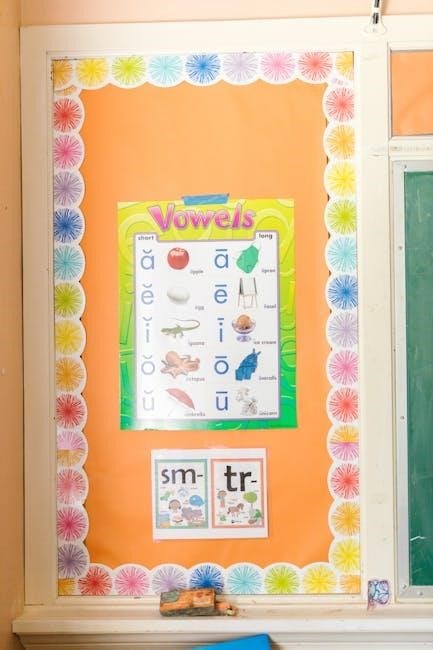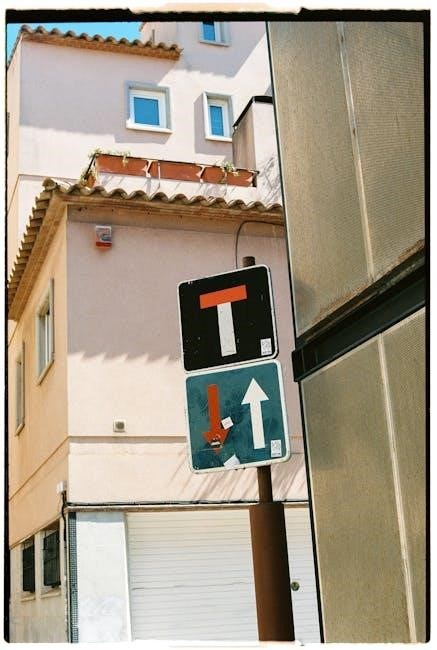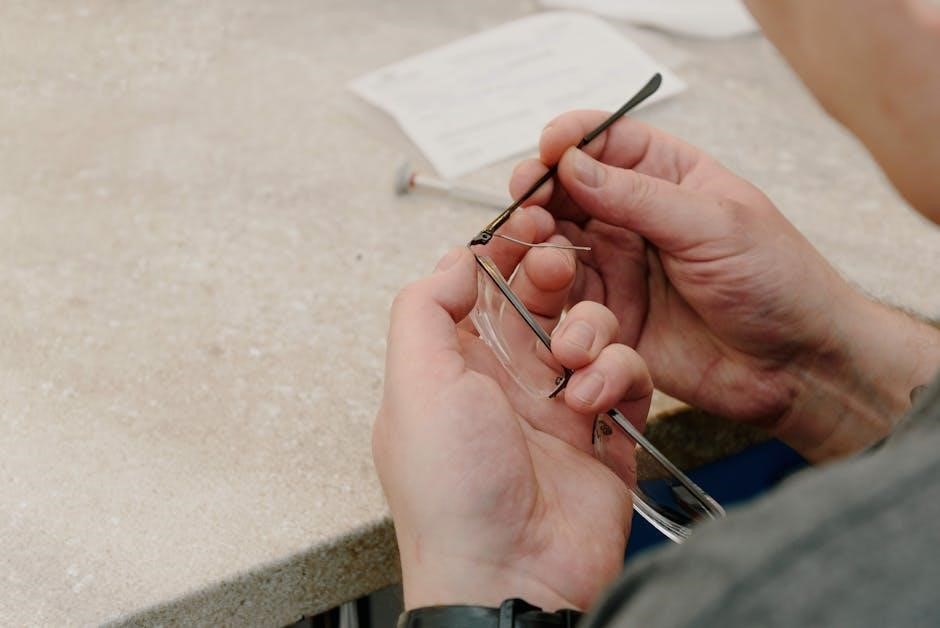Boat guide posts are essential structures that assist in docking, berthing, and navigating watercraft safely. They provide visual and physical guidance, enhancing marina efficiency and reducing accidents.
What Are Boat Guide Posts?
Boat guide posts are vertical or angled structures installed along docks, marinas, or waterways to assist in the safe docking, berthing, and navigation of watercraft. They provide visual alignment guidance, helping boat operators position their vessels accurately. These posts can be fixed, floating, or collapsible, depending on the application. They are essential for maintaining order in busy marinas and harbors, reducing the risk of accidents and damage to boats or infrastructure. Guide posts often include reflective or illuminated markers to enhance visibility, especially in low-light conditions, ensuring safer navigation and docking maneuvers for all watercraft users.
The Importance of Boat Guide Posts
Boat guide posts are essential for ensuring safe and efficient watercraft navigation in marinas, harbors, and waterways. They provide clear visual references, helping boat operators align their vessels correctly during docking or berthing. This reduces the risk of collisions, damage to boats, and infrastructure. Guide posts also enhance operational efficiency in busy marinas by organizing boat movements and minimizing congestion. Additionally, they protect dock structures from potential impact damage, lowering maintenance costs. Their presence contributes to safer waterway management, benefiting both recreational and commercial maritime activities.
History and Evolution of Boat Guide Posts
The concept of boat guide posts dates back to ancient civilizations, where early mariners used natural markers like trees or stones for navigation. Over time, these primitive markers evolved into more structured systems, with wooden posts becoming common in medieval harbors. The Industrial Revolution brought the use of metal and concrete, enhancing durability. Modern advancements introduced floating and collapsible designs, improving functionality. Today, guide posts incorporate innovative materials and technology, reflecting centuries of adaptation to maritime needs. Their evolution underscores their critical role in maritime safety and efficiency across generations.
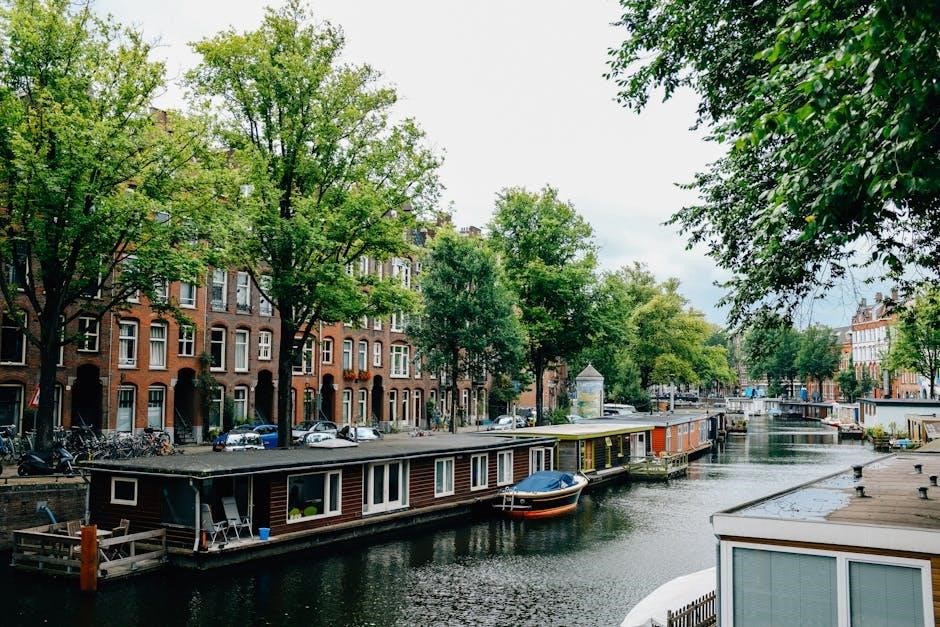
Types of Boat Guide Posts
Boat guide posts are categorized into fixed, floating, and collapsible types, each designed for specific maritime conditions and docking requirements, ensuring safe navigation and berthing.
Fixed Guide Posts
Fixed guide posts are permanent structures installed in marinas, docks, or harbors to assist in boat docking and navigation. Made from durable materials like concrete or steel, they are securely anchored to the ground or dock structure. These posts provide clear alignment guidance for boat captains, reducing the risk of collisions or damage. Their stability and visibility make them essential for busy docking areas, ensuring safe berthing even in challenging conditions. Fixed guide posts are particularly useful in high-traffic marinas where precise maneuvering is critical. They are a reliable solution for enhancing docking efficiency and safety in various maritime environments.
Floating Guide Posts
Floating guide posts are navigational aids designed to provide directional guidance for boats in various water conditions. Constructed from lightweight, buoyant materials like plastic or composite polymers, these posts remain visible on the water’s surface, often equipped with reflective surfaces or lights for enhanced visibility. They are particularly useful in areas with fluctuating water levels or shifting channels, offering flexibility in placement. Floating guide posts are essential in busy marinas or harbors, assisting in safe docking and navigation. Regular maintenance is crucial to ensure buoyancy and visibility, and they are typically anchored securely to prevent drifting while allowing unobstructed boat traffic. Additionally, eco-friendly materials are preferred to minimize environmental impact, though they may come at a higher initial cost due to the specialized materials and anchoring systems required. Despite these costs, their adaptability and effectiveness make them a valuable investment for ensuring maritime safety and efficiency.
Collapsible Guide Posts
Collapsible guide posts are versatile navigational aids designed for temporary or seasonal use. These posts can be easily folded or retracted when not needed, making them ideal for areas with varying boat traffic or special events; Constructed from durable yet lightweight materials, they are portable and require minimal storage space. Collapsible guide posts are often used in temporary docking areas or during marine events to ensure safe navigation without permanent installation. They also reduce the risk of damage from boat impacts, as they can yield under pressure. Maintenance is straightforward, and their adaptability makes them a practical solution for dynamic waterfront environments.

Design and Construction of Boat Guide Posts
Design and construction involve durable materials like steel, aluminum, and composites, ensuring strength and corrosion resistance. Engineering focuses on stability, load-bearing capacity, and weather resistance for longevity.
Materials Used in Boat Guide Posts
Boat guide posts are typically made from durable materials like marine-grade stainless steel, aluminum, and fiberglass, ensuring resistance to corrosion and harsh weather conditions. Concrete and treated wood are also used in certain applications. These materials are chosen for their strength, longevity, and ability to withstand heavy loads and environmental stressors. The selection of material often depends on the specific requirements of the installation location, such as water salinity, temperature fluctuations, and expected usage. High-quality materials are essential to ensure the guide posts remain stable and reliable over time.
Structural Integrity and Durability
Structural integrity is critical for boat guide posts, as they must withstand harsh marine environments and heavy usage. Posts are engineered to bear significant loads while maintaining stability. Durability is enhanced through robust construction methods, such as reinforced foundations and secure mountings. Weather-resistant coatings and finishes protect against corrosion and wear. Regular inspections and maintenance ensure long-term reliability. The design must also account for dynamic forces like wave motion and vessel impacts. Durable construction ensures safety and functionality, making guide posts reliable for navigation and docking systems in various water conditions.
Innovative Designs in Modern Boat Guide Posts
Modern boat guide posts incorporate cutting-edge designs to enhance functionality and adaptability. LED-embedded posts improve visibility in low-light conditions, ensuring safer navigation. Adjustable and modular designs allow customization to suit various water levels and docking needs. Eco-friendly materials, such as recycled plastics and sustainable metals, are increasingly used to reduce environmental impact. Smart technology integrations, like sensors for real-time monitoring, are being explored to optimize performance. These innovations not only improve durability but also align with contemporary maritime safety standards, making guide posts more efficient and user-friendly for marinas and waterway systems.
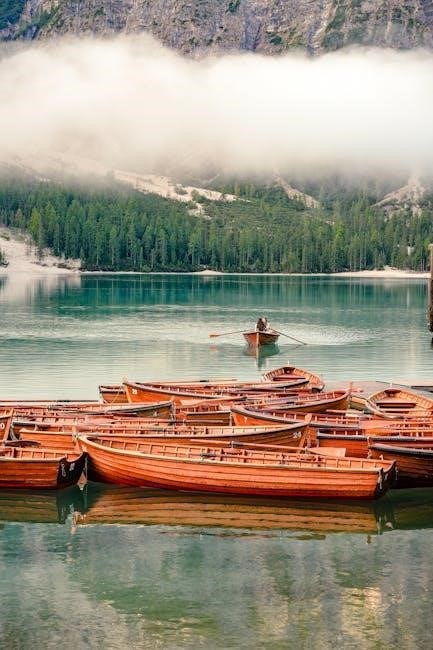
Installation and Maintenance
Proper installation and maintenance ensure durability and safety. Regular checks prevent damage and wear, ensuring guide posts remain effective and reliable over time.
Installation Process of Boat Guide Posts
The installation of boat guide posts involves careful planning and execution. Begin with a site assessment to determine the optimal placement and alignment. Mark the positions accurately, ensuring they align with water levels and vessel traffic patterns. Use durable anchoring systems, such as concrete foundations or deep-rooted poles, to secure the posts. Proper alignment is crucial to guide boats safely. Finally, conduct a thorough inspection to ensure stability and functionality, adhering to safety standards and regulations. Regular monitoring post-installation ensures long-term reliability and effectiveness.
Maintenance Tips for Boat Guide Posts
Regular inspections are essential to ensure the longevity of boat guide posts. Check for damage, wear, or corrosion, especially after extreme weather; Clean surfaces to prevent marine growth, which can weaken structures. Address repairs promptly to avoid deterioration. Apply protective coatings to metal components to resist rust. Ensure all bolts and fasteners are secure. Trim nearby vegetation to maintain visibility. Schedule annual professional inspections for a thorough assessment. Proper maintenance ensures safety, durability, and continued functionality of the guide posts, supporting efficient and secure boat navigation.
Common Mistakes to Avoid During Installation
One of the most common mistakes during guide post installation is improper site preparation. Ensure the area is clear of debris and water levels are accurate; Incorrect alignment can lead to navigational issues, so precise measurements are crucial. Avoid using low-quality materials, as they may compromise durability. Not following manufacturer instructions for anchoring systems can result in instability. Additionally, neglecting to secure posts firmly in the ground or waterbed can cause them to shift over time. Proper planning and adherence to guidelines are essential for a safe and effective installation process.

Safety Features and Considerations
Boat guide posts enhance marina safety by providing clear navigational aids and stability. Durable materials and reflective elements ensure visibility, preventing collisions and accidents effectively always.
Safety Standards for Boat Guide Posts
Safety standards for boat guide posts ensure they meet specific requirements to protect mariners and vessels. These standards typically include guidelines for height, visibility, and structural integrity. International bodies like the International Maritime Organization (IMO) and national authorities set these norms to prevent accidents. Compliance ensures guide posts are durable, visible, and securely installed. Regular inspections are crucial to maintain safety standards and prevent failures. Adhering to these standards minimizes risks, ensuring safe navigation and docking in marinas and waterways.
Visibility and Reflectivity of Guide Posts
Visibility and reflectivity are critical for boat guide posts to ensure they are easily seen by mariners, especially in low-light conditions. Guide posts often feature reflective materials, such as reflective tapes or LED lights, to enhance visibility. Striped patterns and bright colors are commonly used to make them stand out. Proper lighting and maintenance ensure reflectivity remains effective over time. High-visibility guide posts reduce navigation errors and prevent collisions, particularly in busy waterways or poor weather. Compliance with maritime visibility standards ensures they serve their purpose effectively, aiding sailors in safe navigation and docking. Regular inspections are essential to maintain their visibility.
Impact Resistance and Damage Prevention
Impact resistance is crucial for boat guide posts to withstand collisions and harsh environmental conditions. Durable materials like reinforced plastics and galvanized steel are commonly used to ensure longevity. Designs often incorporate shock-absorbing features, such as cushioning pads or flexible mounts, to reduce damage from impacts. Proper installation, including deep-rooted foundations, enhances stability and prevents shifting. Regular maintenance checks ensure that guide posts remain secure and functional. These measures not only protect the guide posts themselves but also safeguard vessels from potential damage, ensuring safe navigation and docking in busy waterways.
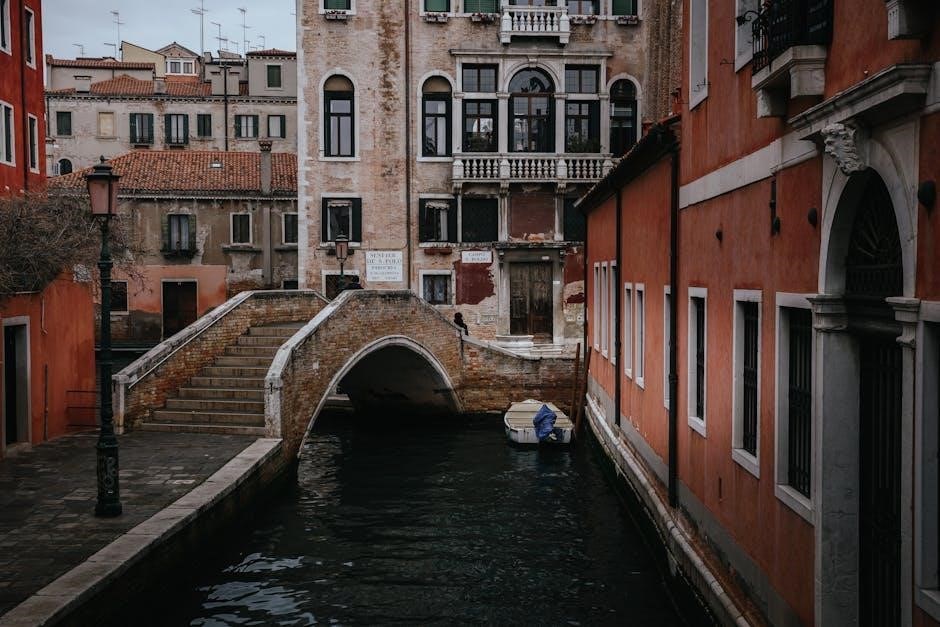
Uses of Boat Guide Posts
Boat guide posts are essential for guiding vessels safely, preventing collisions, and organizing boat traffic in docking, berthing, and navigation areas like canals and waterways.
Marinas and Harbor Applications
Boat guide posts are crucial in marinas and harbors for organizing vessel movement and ensuring safe docking. They help align boats during mooring, prevent collisions, and guide traffic flow. Durable materials like steel or fiberglass are often used to withstand harsh marine conditions. Reflective markings enhance visibility at night or in low-light conditions. Proper installation in these areas minimizes damage to boats and infrastructure while maintaining efficient harbor operations. Regular maintenance ensures they remain effective in guiding mariners and protecting assets, making them indispensable for marina and harbor safety. Their presence supports smooth operations and enhances overall maritime safety standards.
Docking and Berthing Areas
Boat guide posts play a vital role in docking and berthing areas, ensuring safe and efficient vessel maneuvers. They provide clear visual guidance for captains, helping to align boats during docking and undocking. Reflective surfaces on guide posts enhance visibility, especially at night or in low-light conditions. Durable materials like fiberglass or steel are commonly used to withstand frequent use and harsh marine environments. Proper placement of guide posts minimizes the risk of collisions and damage to boats or infrastructure. Regular maintenance ensures they remain effective, supporting smooth operations in busy docking and berthing zones. Their presence is essential for enhancing maritime safety and operational efficiency.
Canals and Waterway Navigation
Boat guide posts are indispensable in canals and waterway navigation, providing clear directional markers for vessels. They help boats stay centered, reducing the risk of scraping against banks or bridges. Reflective surfaces on guide posts enhance visibility, especially in tight bends or low-light conditions. Their sturdy construction withstands impacts from passing boats, ensuring reliability. Regular maintenance is crucial to maintain their effectiveness. Guide posts are often spaced at intervals to guide mariners through narrow passages, making them a critical component of safe and efficient waterway navigation systems. They play a key role in preventing accidents and facilitating smooth travel through constrained waterways.
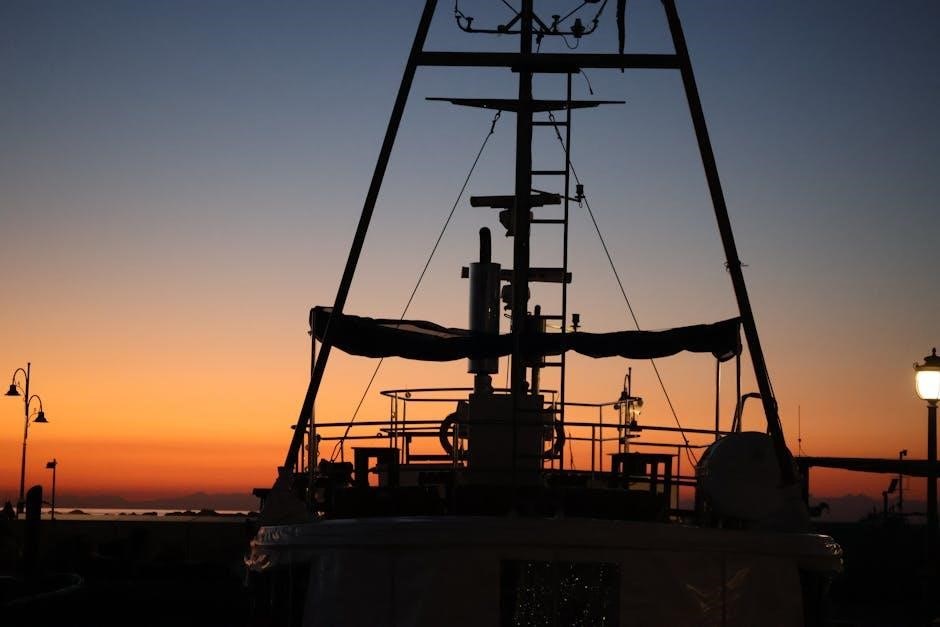
Environmental Impact
Boat guide posts can affect marine ecosystems, but their installation minimizes disruption by avoiding habitat destruction and reducing vessel grounding, which protects aquatic life and environments.
Eco-Friendly Materials for Guide Posts
Eco-friendly materials like recycled plastics, sustainably sourced wood, and durable, low-maintenance metals are increasingly used for boat guide posts. These materials reduce environmental impact by minimizing waste and preventing chemical leaching. Recycled plastics are resistant to marine conditions, while sustainably sourced wood ensures responsible forestry practices. Additionally, aluminum and steel, which are recyclable, offer long-term durability, reducing the need for frequent replacements. These materials align with environmental goals, promoting sustainability while maintaining functionality in marine settings. Their use supports eco-conscious practices in waterway management and infrastructure development.
Minimizing Environmental Disruption
Installing boat guide posts requires careful planning to minimize environmental disruption. Specially designed installation techniques ensure minimal disturbance to marine life and habitats. Guide posts are often strategically placed to avoid sensitive ecosystems, reducing the risk of damage to underwater flora and fauna. Regular maintenance, such as cleaning and inspections, prevents debris accumulation and chemical runoff. Additionally, using environmentally friendly materials and designing posts to blend with natural surroundings further reduces their ecological impact. These practices help preserve waterway health while ensuring the functionality of the guide posts for navigation and safety.
Sustainable Practices in Guide Post Construction
Sustainable practices in boat guide post construction focus on reducing environmental impact while maintaining durability. Eco-friendly materials, such as recycled steel or durable composites, are increasingly used to minimize resource depletion. Energy-efficient manufacturing processes reduce carbon emissions, and solar-powered curing systems are employed to lower energy consumption. Additionally, non-toxic coatings prevent water pollution, ensuring marine life safety. Modular designs allow for easy disassembly and recycling, reducing waste. These practices not only support environmental conservation but also align with global sustainability goals, making guide posts more environmentally responsible without compromising their functionality or longevity.
Regulations and Standards
Boat guide posts must comply with local, national, and international maritime standards to ensure safety and uniformity. Regular inspections and certifications are mandatory to maintain compliance.
Local and National Regulations
Local and national regulations govern the installation and maintenance of boat guide posts to ensure safety and environmental compliance. These regulations often specify materials, heights, and spacing requirements. Authorities may mandate regular inspections to verify structural integrity and adherence to safety standards. Non-compliance can result in fines or operational shutdowns. Additionally, permits are typically required for installation, especially in protected waterways or sensitive ecosystems. These rules help maintain uniformity and minimize risks for mariners and the environment. Adhering to local and national guidelines is essential for safe and efficient maritime operations.
International Maritime Standards
International maritime standards play a crucial role in ensuring the safety and efficiency of boat guide posts worldwide. Organizations like the International Maritime Organization (IMO) establish guidelines for guide post design, materials, and installation to promote uniformity across global waterways. These standards address factors such as visibility, durability, and environmental impact. Compliance with international standards helps prevent accidents, protects marine ecosystems, and facilitates safe navigation for vessels of all sizes. Adhering to these norms is essential for maintaining consistency and reliability in maritime operations across borders. Regular updates to these standards reflect advancements in technology and safety practices.
Compliance and Certification
Compliance and certification are essential for ensuring boat guide posts meet safety and regulatory requirements. Recognized certifying bodies, such as ISO or ASTM, evaluate guide posts for structural integrity, materials, and performance. Certification involves rigorous inspections, testing, and documentation to confirm adherence to international or local standards. Obtaining certification not only ensures operational safety but also demonstrates commitment to quality and environmental protection. Certified guide posts are trusted by marinas, harbors, and maritime authorities, providing assurance of reliability and durability in various marine environments. Proper certification is a cornerstone of responsible guide post installation and maintenance.
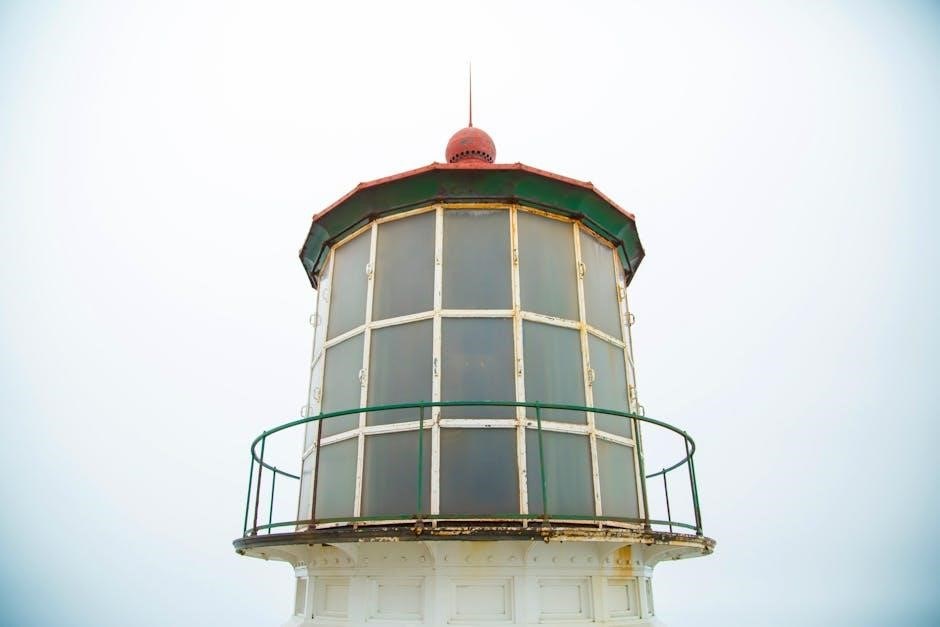
Case Studies and Examples
Notable marinas worldwide have successfully implemented boat guide posts, enhancing docking safety and efficiency. Examples include large-scale projects in Europe, Asia, and North America, demonstrating their effectiveness.
Notable Marinas Using Guide Posts
Several prominent marinas worldwide have adopted boat guide posts to enhance safety and docking efficiency. For instance, Marina del Rey in California utilizes durable guide posts to assist vessel alignment, reducing docking accidents. Similarly, the Port of Southampton in the UK employs illuminated guide posts for improved visibility, especially during nighttime operations. These marinas highlight how guide posts can streamline navigation, benefiting both experienced captains and newcomers. Their success stories demonstrate the practical benefits of incorporating high-quality guide posts into modern marina design.
Challenges and Solutions in Guide Post Installation
Installing boat guide posts often presents challenges, such as underwater terrain and weather conditions. For instance, in deep-water marinas, securing posts can require specialized anchoring systems. Additionally, corrosion from seawater demands the use of durable materials like galvanized steel or fiberglass. Solutions include using adjustable mounting systems and regular inspections to ensure stability. Proper planning and adherence to environmental regulations also help mitigate installation difficulties, ensuring long-term functionality and safety for mariners.
Installing boat guide posts can be challenging due to underwater terrain, weather conditions, and material durability. Solutions include using adjustable mounting systems to accommodate varying water depths and ensuring posts are constructed from corrosion-resistant materials. Regular inspections and maintenance are crucial to maintain structural integrity. Additionally, consulting with marine engineers can help address site-specific challenges, ensuring safe and effective installation. Proper planning and execution are key to overcoming these obstacles and providing reliable guidance for boaters.
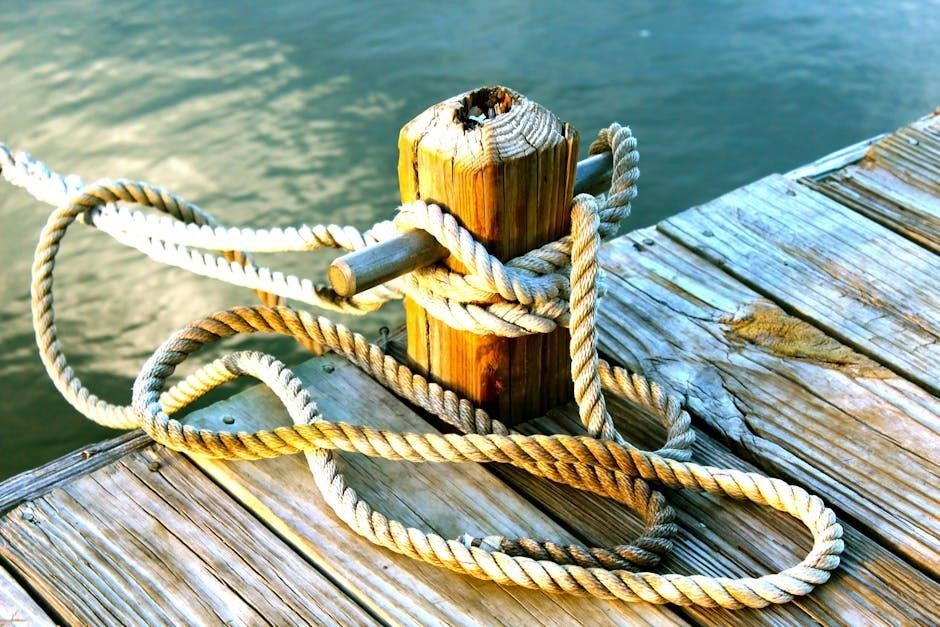
Innovations in Boat Guide Posts
Modern boat guide posts integrate smart technology, durable materials, and energy-efficient designs, enhancing navigation safety and environmental adaptability for marinas and waterways worldwide.
Smart Guide Posts and Technology Integration
Smart guide posts are revolutionizing marine navigation with advanced technology integration, offering enhanced safety and efficiency. Solar-powered systems reduce energy costs while IoT connectivity enables real-time data transmission. Sensors monitor water levels, weather conditions, and vessel traffic, providing critical information to marinas and boat operators. LED lighting improves visibility, and integrated emergency response systems enhance safety. These innovations not only streamline operations but also promote environmental sustainability by minimizing energy consumption. Smart guide posts are a cornerstone of modern marina management, ensuring safer and more efficient waterway navigation.
Future Trends in Boat Guide Post Design
Future trends in boat guide post design emphasize sustainability, functionality, and adaptability. Innovations include the use of lightweight, durable materials like reinforced polymers and composite blends for longevity. Modular designs allow for easy customization and quick replacement of damaged sections. Energy-efficient solutions, such as solar-powered lighting, are becoming standard. Additionally, designs are incorporating flexible bases to absorb impact, reducing damage from vessel collisions. These advancements aim to balance environmental concerns with practical needs, ensuring guide posts remain effective and resilient in evolving marine environments.
Research and Development in the Field
Research and development in boat guide posts focus on enhancing functionality, durability, and sustainability. Studies explore advanced materials like composites and polymers for improved strength and corrosion resistance. Innovations in flexible designs aim to reduce damage from impacts while maintaining stability. Additionally, R&D emphasizes integrating technology, such as sensors for real-time monitoring of water conditions. Sustainable practices, like using recycled materials, are also being prioritized. These efforts ensure guide posts adapt to evolving marine demands, improving safety and efficiency for boaters and marinas alike. Continuous R&D drives the industry toward smarter, eco-friendly solutions.
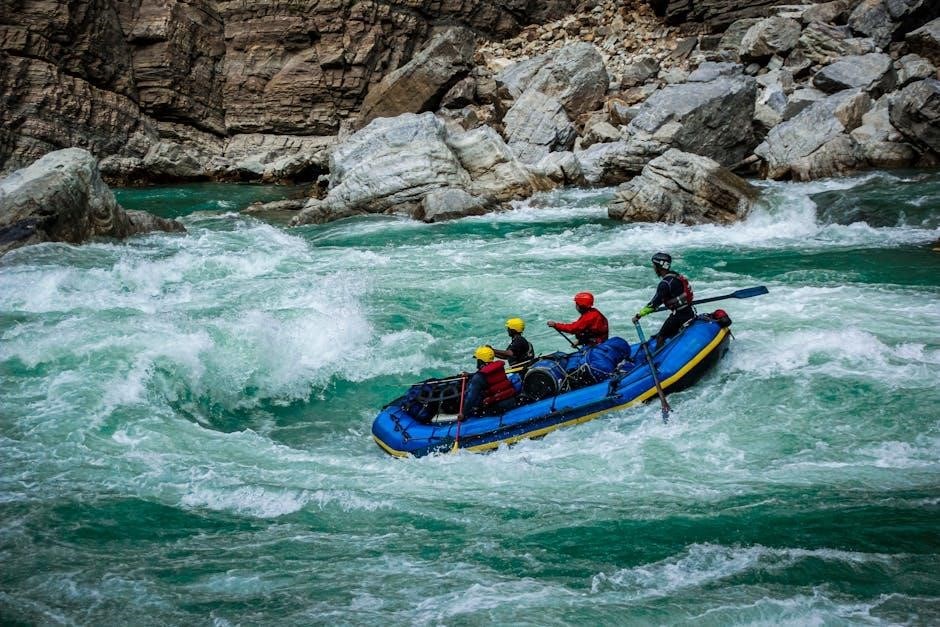
Economic Considerations
Economic considerations for boat guide posts involve initial costs, maintenance expenses, and long-term budget planning. Material quality and installation complexity significantly impact overall expenditures and sustainability.
Cost of Boat Guide Posts
The cost of boat guide posts varies based on materials, size, and installation complexity. Basic fixed posts can range from $500 to $2,000, while floating or collapsible designs may exceed $5,000. High-quality materials like stainless steel or durable polymers increase expenses. Custom designs with advanced features, such as lighting or reflective coatings, can significantly raise prices. Environmental factors, like water depth or current strength, may also impact installation costs. Budgeting for guide posts requires balancing durability, functionality, and long-term maintenance to ensure cost efficiency and safety in marinas or waterways.
Long-Term Cost Efficiency
Boat guide posts offer long-term cost efficiency by reducing maintenance and repair expenses. Durable materials like stainless steel or reinforced polymers minimize the need for frequent replacements. Their robust construction withstands harsh marine conditions, lowering maintenance costs over time. Additionally, guide posts help prevent damage to boats and dock infrastructure, reducing repair expenses. While initial installation costs may seem high, their longevity and protective benefits make them a cost-effective solution for marinas and harbors. Properly installed guide posts can last decades, ensuring long-term financial savings and operational efficiency.
Funding and Budgeting for Guide Post Projects
Funding and budgeting for boat guide post projects require careful planning to ensure affordability and sustainability. Evaluating initial installation costs, materials, and labor is crucial. Securing funds through grants, loans, or allocations from local authorities can help manage expenses. Budgeting should also account for long-term maintenance and potential upgrades. Prioritizing durable materials and efficient designs can reduce overall costs. Additionally, phased installation can spread financial burdens over time, making large-scale projects more manageable. Proper budgeting ensures guide post systems remain viable and effective for years to come, supporting safe and efficient waterway operations.
Boat guide posts are essential for navigation, safety, and organization in waterways. Their durability, adaptability, and innovative designs ensure they remain vital for protecting boats and infrastructure, now and future.
Key Takeaways About Boat Guide Posts
Boat guide posts are essential for safe and efficient navigation in marinas and waterways. They provide clear guidance, prevent damage to vessels, and enhance docking accuracy. Durable materials like steel and fiberglass ensure longevity, while innovative designs adapt to various environments. Proper installation and maintenance are critical for functionality. Guide posts also support environmental and maritime regulations, ensuring sustainable practices. Their versatility and importance make them a cornerstone of modern waterway management, balancing safety, efficiency, and ecological considerations for all users.
The Future of Boat Guide Posts
The future of boat guide posts lies in smart technology integration, enabling real-time data monitoring and improved navigation safety. Solar-powered and energy-efficient designs will reduce environmental impact while lowering maintenance costs. Modular designs will allow for easy customization and adaptability to varying water conditions. These innovations will enhance maritime safety, efficiency, and sustainability, ensuring guide posts remain vital in modern navigation systems;
Final Thoughts on Their Importance
Boat guide posts are indispensable for ensuring safe and efficient waterway navigation. Their role in protecting vessels, infrastructure, and the environment cannot be overstated. By providing clear guidance and structural support, they minimize accidents and reduce maintenance costs. As maritime activities grow, their importance will only increase, making them a cornerstone of modern waterway management. Their durability and adaptability ensure they remain a vital component in safeguarding maritime operations for years to come.
